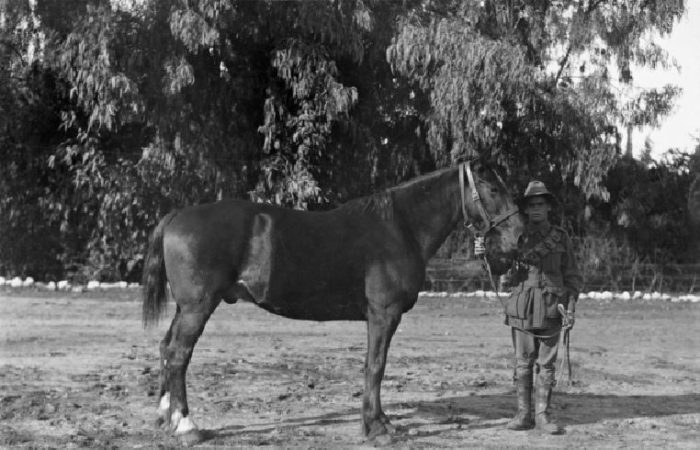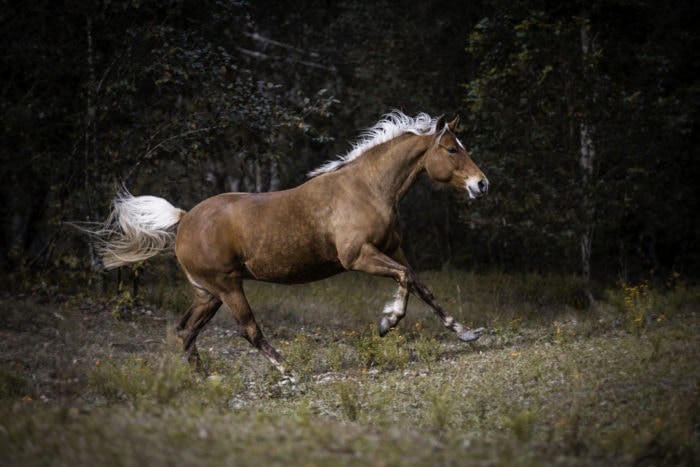Fight for survival of wartime breed

IF YOU’RE looking for a horse with superior strength, stamina and a superb temperament, it’s hard to go past the Waler.
The preferred mount of various military forces around the world in the first half of the 20th Century, this unique Australian breed has become the stuff of legends.
There was “Bill the Bastard”, a fractious, fearless and fiercely loyal horse who helped Major Michael Shanahan from the 2nd Australian Light Horse Regiment rescue four Tasmanian soldiers stranded under enemy fire during a pivotal World War I battle.
He galloped for more than 1.2km through the treacherous Egyptian desert landscape with all five men on board – three on his back and one on each stirrup – to return the soldiers to safety.
Then there was the famed charge of the 4th Australian Light Horse at Beersheba on 31 October 1917, where soldiers mounted on Walers galloped over 6km of open ground against the Turkish and German defences to seize control of a strategic Palestinian stronghold. It is renowned as the last great successful cavalry charge in history.
A staggering 136,000 Walers were sent overseas during WWI to Allied armies in Africa, Europe, India and Palestine. Only one of these courageous military mounts ever returned to Australia, with most either killed in action, sold as remounts at the end of the war for the British Army in India, or destroyed due to age or infirmary.

A typical Waler of the ANZAC Mounted Division. (Image credit: 7. 4077116 Australian War Memorial Collection)
Their hardiness, endurance and ability to perform under extreme conditions saw Walers earn praise from one English Lieutenant Colonel as “the finest cavalry mounts in the world”.
But since the 1950s when the remount trade from Australia all but ceased and commercial breeding virtually stopped, the Waler has been fighting another battle for survival, with most of the old bloodline horses either left to roam wild across the Australian outback or cross-breed with other horses.
With the pure bloodlines already pushed to the brink of extinction, the Waler was placed under more pressure in the mid-1980s when the Northern Territory Government’s feral animal eradication scheme saw a large number of wild horses mustered and trucked to abattoirs, or killed in helicopter-based aerial culls.
Even the toughest and most enduring of breeds would have been hard-pressed to survive such a calculated onslaught, so it was fortunate that a band of dedicated horse owners stepped in at this time to preserve the last remaining Walers.
The campaign began in 1986 when a large herd of old bloodline descendants was discovered at a former remount station in Alice Springs. Saved from the threat of eradication, several truckloads of horses were relocated to domestic homes across Australia where they were nurtured back to health.
This was the first of numerous relocation campaigns on remote stations, which over the years have saved the last remaining wild herds and reintroduced them to other genetically pure breeding stock, pushing the population of Walers across Australia today to around 1000 horses.
Many of these early campaigners went on to form the two official associations dedicated to preserving the iconic breed, the Waler Horse Owners and Breeders Association Australia Inc. (WHOBAA) and the Waler Horse Society of Australia Inc (WHSA). Both organisations have established stud books to trace and record the bloodlines of the Walers to ensure they remain pure.

Ace, a foundation Waler stallion. (Image credit: Kayla Mills)
WHOBAA president Palma Dennis has been involved since almost the beginning of the campaign, taking delivery of two “very thin, very poor bush-bred little fillies that had come off one of stations” in 1987, and nursing them back to health.
She says the uniqueness of Waler and its importance in Australia’s military history meant it was crucial to continue preserving the breed’s bloodlines.
“There are a couple of reasons (to preserve the bloodline) and the first is the tremendous job they did for the British Armies in the First World War, where they claim that the Australian light horseman mounted on the Waler basically won the North African campaign of that war,” Palma says.
“They might not have been able to do it without the sheer strength and toughness of the Walers at the time, they were one of the few breeds that would have the courage to charge cannons and machine guns, they were very brave horses.
“Secondly they do contain unique bloodlines that have gone extinct in other breeds in the world.
“Dr Gus Cothran over in Texas, one of the world’s leading equine geneticists, has been doing a lot of work with our horses and he is convinced that they are not only a breed but an extremely unique one.
“A lot of the breeds that went into creating the Waler, like old Percheron and Suffolk Punch bloodlines aren’t there anymore. The coach horses from England like the Norfolk Roadster and the Yorkshire coach horses, they’re extinct, their genes only go on in the Australian Waler horse.”
Walers began to emerge from the mix of imported horses in the Colony as its own distinct breed during the early 1800s, known for its moderate size, strong carriage, good bone structure and musculature, as well as its intelligent, inquisitive and kind temperament.

Star, a first generation captive-bred Waler mare. (Image credit: Kayla Mills)
Originally a working horse, Walers were used for military purposes by the British Army as early as the 1830s. More than 37,000 Walers were used by Australian Infantry Forces during the Boer War from 1899 1901, while Walers also took part in the Second World War and various other conflicts. Australian War Memorial historian Dr Meleah Hampton said the Waler was particularly prized by the military for its strength, endurance and unique gait.
“One of the things I have very recently learned about Walers is that the Australian stock horse went from a quick walk to a canter really smoothly, which avoids the jingle up and down of a trot,” she says.
“This is of benefit (for soldiers) when they’re carrying a lot of gear as it doesn’t shift the load, and it can also be a bit quieter when they’re sneaking around in the dark (near enemy forces).”
These days that agility is more often showcased during performance work including dressage and show-jumping competitions, while the Waler’s “jack-of-all-trades” nature means it is also used for everything from stock work to trail riding, and is an ideal breed for children due to its calm, protective nature.
Palma said Association members would continue their work to preserve the Waler bloodline into the future, however the only herds that are thought to remain in the wild are currently safe and secure on Aboriginal-owned stations in the Kimberley.




